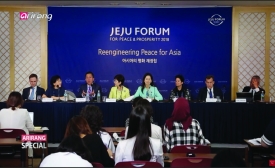northeast asia

CPD Director Jay Wang discusses public diplomacy during a panel at the 2018 Jeju Forum for Peace and Prosperity.
Leaders from Buddhist bodies in South Korea, China and Japan have expressed hope for peace and exchanges among the three Northeast Asian countries at an annual gathering in the eastern China city of Ningbo, a South Korean Buddhist organization said Thursday.
Considering the importance of public diplomacy in cultural and people-to-people exchanges, we encouraged and supported the foreign ministries of the three countries to continue consultations on a trilateral forum on public diplomacy to enhance understanding and friendship among the peoples of the three countries.
What we are actually seeing is Diplomacy 2.0 on the Korean peninsula: a nuanced, three-dimensional foreign policy strategy designed to alter Chinese strategic thinking, engage U.S. interests, and ultimately build Northeast Asian cooperation where there was little in the past.
Feldman, a specialist on German foreign policy and international reconciliation, remarked that there are two kinds of public diplomacy. The first is carried out by the government and aims at improving the national image. The second concerns activities in which NGOs and other nongovernmental actors play the leading role. These activities might be described as “paradiplomacy,” or “transnationalism” in the case of projects that transcend national borders. She said that for public diplomacy to be successful, a partnership between government and non-government actors was essential.







